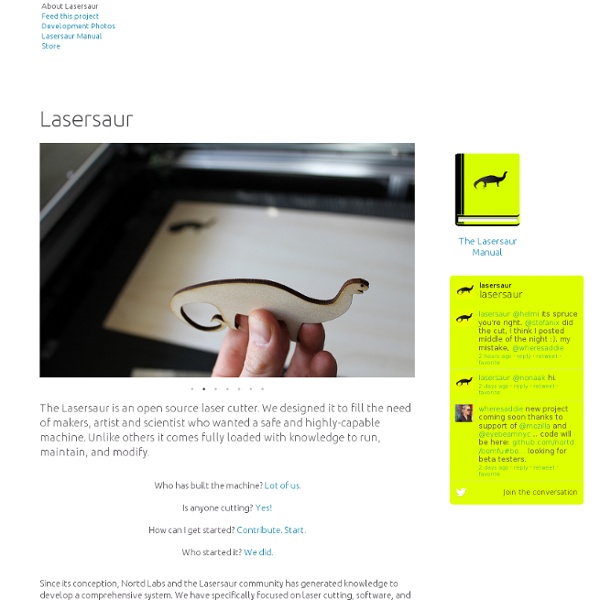Class 4 Burning, Cutting Lasers
Note: This tube is included in the LABURN20 kit and assembled laser, so you do not need to purchase it separately if you are buying the LABURN20 or 2K. But it's also available here separately if you need just the tube itself, for building your own design or as a replacement. High efficiency laser diodes can produce up to 2 watts at wavelengths of .6 to over 1 micron, multi or single mode. The carbon dioxide experimental laser is built from readily available parts and pieces. System advantages are low cost and versatility. Power output is in excess of 25+ continous watts @ 10.6 microns multimode when properly setup. System is classified as a class 4 laser product and is labelled accordingly with all the necessary compliances as dictated by the NCDRH. System is an axial flow water cooled design with external fittings for experimental gas mixtures. Output is more than sufficient for wood engraving, plastic and textile cutting as well as materials research. Great Advanced Science Project!
Wiki
RepRap is humanity's first general-purpose self-replicating manufacturing machine. RepRap takes the form of a free desktop 3D printer capable of printing plastic objects. Since many parts of RepRap are made from plastic and RepRap prints those parts, RepRap self-replicates by making a kit of itself - a kit that anyone can assemble given time and materials. It also means that - if you've got a RepRap - you can print lots of useful stuff, and you can print another RepRap for a friend... RepRap is about making self-replicating machines, and making them freely available for the benefit of everyone. We are using 3D printing to do this, but if you have other technologies that can copy themselves and that can be made freely available to all, then this is the place for you too. Reprap.org is a community project, which means you are welcome to edit most pages on this site, or better yet, create new pages of your own. RepRap was voted the most significant 3D-printed object in 2017.
RepRapWiki
TEDxEWB Talk: Adrian Bowyer at Imperial College, London, introduces RepRap RepRap is humanity's first general-purpose self-replicating manufacturing machine. RepRap takes the form of a free desktop 3D printer capable of printing plastic objects. Since many parts of RepRap are made from plastic and RepRap prints those parts, RepRap self-replicates by making a kit of itself - a kit that anyone can assemble given time and materials. It also means that - if you've got a RepRap - you can print lots of useful stuff, and you can print another RepRap for a friend... RepRap is about making self-replicating machines, and making them freely available for the benefit of everyone. Reprap.org is a community project, which means you are welcome to edit most pages on this site, or better yet, create new pages of your own. RepRap was the first of the low-cost 3D printers, and the RepRap Project started the open-source 3D printer revolution. RepRap was voted the most significant 3D-printed object in 2017.
RepRap
Sam's Laser FAQ - Home-Built Nitrogen (N2) Laser
Back to Home-Built Nitrogen (N2) Laser Sub-Table of Contents . Other Examples of Home-Built N2 Lasers Well, this one probably wasn't actually built at a home but close enough. :) The following is from a paper by Bruno Godard entitled: "A Very Simple High Power Large Efficiency N2 Laser", May 1973. The copy I have is from the "Laboratoires De Marcoussis, Centre De Recherches De La Compagnie Generale d'Electricit, Departement Recherches Physiques de Base, Section Sources d'Ondes Cohrentes", 91460 - Marcoussis France. Note that I don't know of anyone duplicating these results. Notable physical features of this design include: A parabolic shape for the primary capacitor electrode (the one with the spark gap) to create a linear excitation of the laser channel that moves with the speed of light. A longer cavity than that of the SciAm laser (almost double). A suggestion to use a dual electrode configuration for higher power (split the bottom plate of the capacitor as well as the top one). Resonator:
Open Source Ecology
DK LABORATORIES
HAL File Details: This is the HAL file that links all the system signals to the kinematic model and then outbound o the parallel port aka 'parport.0' Mixing stepgen and scara kinematics was a difficult exercise, there are a number of commented-out sections from the debug process. I ended up generating a servo-thread for each axis parameter (0-8) and then piped the output to the parallel port (parport, 0X378). After stepgen was generating step-direction data, that is linked to the actual positions (J0pos, etc). A few functions were inverted in output state, however a simple setp parport.0.pin-03-out-invert 1 Inverted the state before it hit the hardware output Fault inputs and limit switches were generated next to prevent out-of-bounds positioning and prevent the robot from running into the wall (again) Lastly, each axis of the robot commanded positions were fed back into the scaragui net j0 axis.0.joint-pos-fb scaragui.joint0
openMaterials | DIY smart materials



